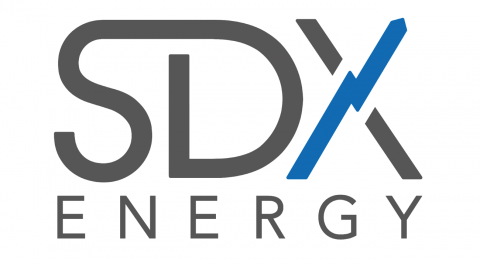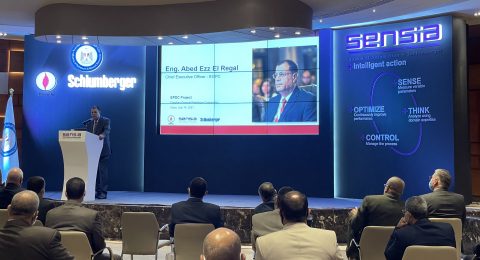Given the demand for natural gas in Egypt and the recent success exploring for gas focused upon deeper targets, there is an increasing need for solutions to address the challenges of high pressure and high temperature drilling environments. “Conventional” Miocene targets in the Nile Delta and Mediterranean Sea have relatively benign drilling and completion conditions; temperatures rarely exceed 150 degC and pressures are less than 10kpsi. However, for deeper Oligocene targets, where total depths can exceed 6000 meters, temperatures have approached and/or exceeded 200 degC. And, although expected formation pressure for these deeper targets is – by global standards – not so extreme (i.e. less than 15,000 PSI), equivalent circulating density (ECD) windows are extremely tight, and therefore pore pressure management is essential for a successful drilling campaign
Increased HPHT activity forecasted for the Mediterranean
There have been well-publicized plans to drill and develop not only Miocene, but also deeper HPHT horizons in the Mediterranean West Nile Delta. The commitment is just part of the projected increased activity in the Mediterranean in the coming years. A number of additional operators have planned wells to explore, further appraise or develop leases in the Mediterranean and onshore Nile Delta. Of these wells, a significant number will be deeper tests that will necessitate the proper planning HPHT wells require.
New HPHT frontiers
Although the Mediterranean is the primary location for the increased number of HPHT wells, both the onshore Nile Delta (as mentioned above) and the Red Sea are also emerging areas where HPHT wells have been drilled and will be more actively pursued in the future. As the Red Sea is an active rift zone, temperature is not well understood, but is estimated to be greater than 200 degC at target depth and certainly a challenge that needs to be planned for. The Red Sea is clearly a frontier area, and as more wells are drilled the true temperature challenges will be more clearly understood.

3-D pore pressure modeling is essential for proper preparation of
Technical Challenges
When bottom hole temperatures exceed 150 degC, special consideration and planning are necessary when drilling, evaluating and completing a well. Most drilling and completion hardware are rated to temperatures above 200 degC. Cementing slurries, if properly planned can be pumped successfully at these temperatures as well, but designs need to be carefully tested and two main points should be taken into consideration; the entire temperature profile of the interval to be cemented and the bottom hole pressure as pressure along with temperature greatly impact curing times. Wireline logging tools, if heat properly checked, can survive temperatures in excess of 225 degC, as electronic sections, the most vulnerable to high temperatures, can be flasked to extend the life of a logging tool. The biggest challenge today in regard to temperature is Measurement While Drilling (MWD) and Logging While Drilling (LWD) technologies. Most LWD and MWD high temperature tools are only rated to 175 degC. The MWD and LWD hardware can survive higher temperatures, but current LWD/MWD electronic components cannot be flasked and are operational risk, especially at longer exposure times to the heat. With all high temperature operations, equipment specifications are not the only critical factor; it cannot emphasize enough the need for experienced personnel and proper planning and process to be prepared for the HPHT operation.
The challenge with pressure in the Mediterranean is not pressure ratings of equipment – 15kpsi – it is well within the pressure rating specifications of most bottom hole assembly hardware, wireline logging tools, completion hardware… etc. The challenge is tied to drilling in an environment where there is a small margin between the fracture gradients and the pore pressure (i.e. tight pressure window). The key to success is to be able to predict pore pressure ramps and to manage downhole ECD quickly and accurately.

Seismic while drilling technology can be used for pore pressure indication ahead of the bit
New solutions to an old challenge
Fortunately for the HPHT operator, a solution for MWD and LWD in high temperatures is just around the corner. Conventional electronic boards are being upgraded with ceramic electronics for high temperature applications, and the industry will see field-testing of MWD, LWD and rotary steerable system components before the end of 2011. The expectation is to raise the temperature specification of at least the basic MWD, gamma ray and resistivity LWD measurement to a minimum of 200 degC.
Regarding the challenge of pore pressure, the traditional approach is to develop a pore pressure model and then subsequently, as you drill, utilize measurements at the wellsite to update the model to reduce uncertainties of the pore pressure prediction for the rest of the well. Real time LWD measurements, specifically LWD sonic and resistivity are used to indicate pore pressure trends and the potential of a pore pressure ramp. Formation pressure while drilling technology can also be utilized to calibrate pore pressure models by obtaining an actual pore pressure at depth.
The above traditional approach is critical for identifying trends and calibrating the pore pressure of the section that has been already drilled, but the question remains; what is the pore pressure that lies ahead? Seismic while drilling technology – acquiring downhole seismic waveforms and real time velocity data – is one approach to identifying pore pressure trends ahead of the bit. Seismic while drilling works and acquires data in a similar way to a conventional wireline vertical seismic profile (VSP) service, except the geophone array is part of the bottom hole assembly and measurements are made and recorded uphole in real time. The benefits for such a measurement are two – fold: a continuous check shot measurement as you drill, to update seismic time to depth accuracy; but more importantly the recording of a seismic trace that can indicate pore pressure trends hundreds of feet ahead of the bit. The combination of a good pore pressure model, updated with resistivity, sonic and seismic velocities, calibrated with actual pore pressure measurements, and combined with a seismic look ahead can be a powerful combination to reduce pore pressure risk uncertainty.
Managed pressure drilling
Even with a perfect pore pressure model and effective real time measurements, the challenge of tight pore pressure/fracture gradient margins still exists and needs to be mitigated. Managed Pressure Drilling (MPD) is a drilling technique, which the drilling pressure is closely and quickly controlled at surface via a closed loop drilling system. The effectiveness of surface control of downhole pressure can allow for operating at near balance, thus allowing for successful drilling in a tight pressure window. Added benefits for using MPD include better ROP, reducing stuck pipe risk, avoiding welbore pressure and early kick detection. But most importantly, MPD allows for drilling the well that given a tight pore pressure/fracture gradient margin, was not previously drillable.

Managed Pressure Drilling (MPD) is used to drill wells with tight fracture gradient/pore pressure margins. Above is a schematic of the MPD rig setup.
Conclusion
There appears to be an increased amount of HPHT exploration, appraisal and development drilling in the coming years in Egypt. Temperatures exceeding 200 degC will be a challenge – especially when it comes to MWD and LWD technologies, but high temperature solutions via ceramic electronics innovations are coming to help mitigate this challenge. Pore pressure prediction and mitigation are essential to successfully drilling HPHT well in the Mediterranean; the advances of technologies such as seismic while drilling and managed pressure drilling are relatively new solutions to drill HPHT wells safely and effectively.
Provided by Chris Shade, Marketing Manager – Oilfield Services, East Africa and East Mediterranean, Schlumberger







